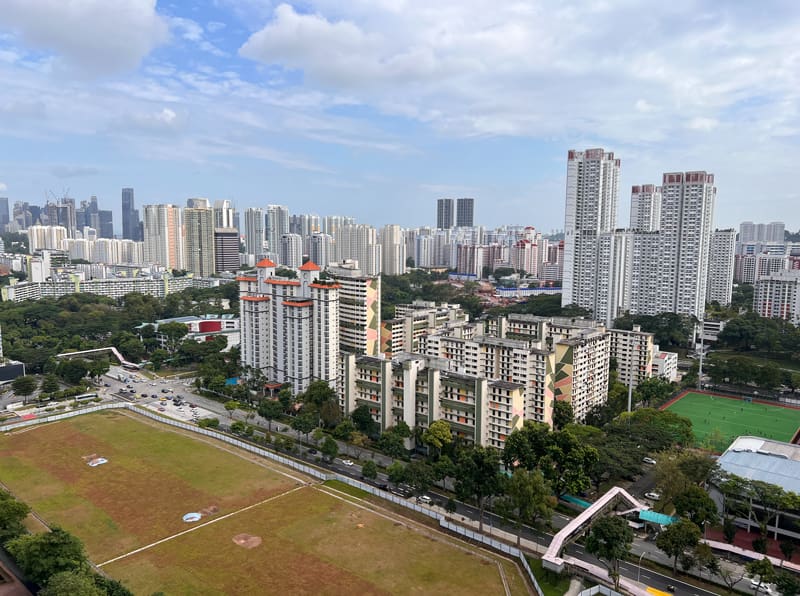Intensified Land Usage – Land Betterment Charge
With recent developments relaunching for en-bloc sales, the Land Betterment Charge (LBC) is something we might encounter frequently. It is another significant cost that could influence developers’ decisions on whether to replenish their land stocks and intensify their land use, especially considering the uncertainty surrounding construction costs and bank rates at present.
The Land Betterment Charge (LBC) is a new term that landowners or developers will need to become familiar with if they wish to enhance their development or intensify their land’s usage by redeveloping.
It will replace the previously known Development Charge (DC), Difference Premium (DP) and Temporary Development Levy (TDL). The Land Betterment Charge take effect on 1st August 2022.

The Development Charge has been administered by the Singapore Land Authority (SLA) and the Urban Redevelopment Authority (URA) since 1985. Similar to the development charge, the Land Betterment Charge table will also be revised annually in March and September by SLA after consulting with the chief valuer. On the other hand, the increment in land value could also signal the demand for land at the geographical location for a particular use group.

An Improved Plan Submission and Process Flow
This new Land Betterment Charge system improves the landowners’ development application process. There will be no need to submit a separate LBC application payment if the new development planning application is approved. Once the proposed planning is approved by URA, SLA will be notified and will directly contact landowners if there is an increase in land value and Land Betterment Charges payable.
A Liability Order (LO) will be issued directly to the taxable person within one month from the issuance date. The payable Land Betterment Charge (LBC) amount will be indicated in the Liability Order (LO). This applies to all planning permissions, plan lodgements, and various restrictive covenants.
The chargeable amount is determined by the Provisional Permission submitted for use and intensity during the applicant’s/qualified person’s application to URA. In the event of any changes in the approved use and intensity in the Written Permission (WP), which further increases the land value, a Revised Liability Order (RLO) will be issued. An additional Land Betterment Charge top-up payment will be required within one month from the RLO notice.
The Land Betterment Charge is set at 70% of the land value increment from the grant consent on the proposed developments. In exceptional cases, 100% may be charged upon periodic review.
Computation Principles – Land Betterment Charge
Similar to the former Development Charge, the Land Betterment Charge value will use the same computing principles. Following the Development Charge and Development Premium systems, the Land Betterment Charge is the difference between post-chargeable and pre-chargeable valuation.
The post-chargeable valuation is derived from variations of the relevant restrictive covenant or proposed use and intensity per URA’s planning permission or plan lodgement. The pre-chargeable valuation will still reference Historical Master Plans from 1958, 1980, and 2003. These will enable a value to be derived from restrictive covenants in the State title or from the last authorized/approved development.
Land Betterment Charge – Computing Methods
The Table of Rates method utilizes rates determined across 118 geographical sectors in Singapore, corresponding to specific use groups such as B1 for residential landed houses and B2 for residential non-landed buildings. This method mirrors the previous DC Table of Rates used for Development Charges.

The Valuation Method can also be chosen if the Table of Rates is not applicable, such as when there is no suitable or comparable use group for reference. In such cases, the taxable person must submit a prescribed form to elect the Valuation Method in place of the Table of Rates method. This election is irreversible.
The valuation is determined by the Chief of Valuer of the Inland Revenue Authority of Singapore (IRAS). This valuation ascertains any increase in land value to determine the chargeable Land Betterment Charge to the taxable person.
Unexpired Land Tenure and Temporary Permission
Leasehold land with unexpired leases will be charged following the Leasehold Table. The value is expressed as a percentage of the freehold value based on the unexpired tenure of the land.
There is a temporary permission table showing a range of discount factor values based on the temporary period issued.
Baseline Database Information
Information on the pre-chargeable valuation of all land parcels will be available online at SLA’s Integrated Land Service (INLIS). This will enable landowners to access information before making an application and estimate the cost of the Land Betterment Charge. It aims to provide a more transparent and simplified process for retrieving information.
